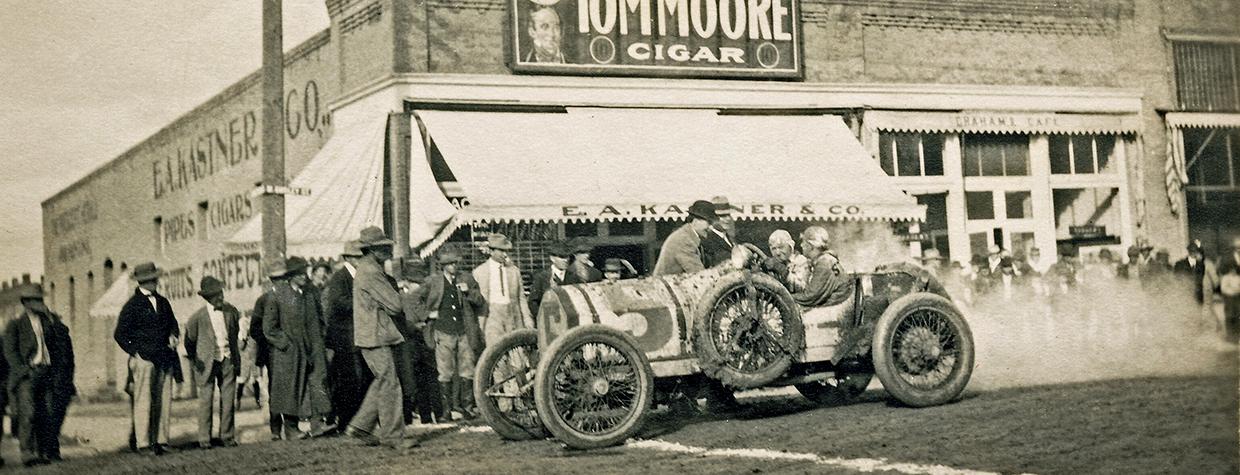These days, a road trip from Los Angeles to Phoenix is routine, but in the infancy of car travel, driving that distance was an accomplishment. Thus, the Cactus Derby, which debuted in November 1908 and covered what then was a route of more than 500 miles. According to a June 1969 Arizona Highways story, the winner of that race was Colonel F.C. Fenner, who was driving a White steamer that averaged a blistering 17.6 miles per hour.
The derby grew in popularity over the next few years. Although the inaugural race had only four competitors, the final run, in November 1914, was a highly anticipated event featuring 20 racers. The route, which required racers to go through tough desert conditions, also demanded experience and expertise. Given the lack of conveniences such as service stations and paved roadways, it’s no wonder the Phoenix Gazette dubbed the derby the “hardest auto race ever staged.”
Over the years, the race route had alternated between a northern route (through Ehrenberg) and a southern route (through Yuma). The final route followed the northern course, which lengthened the race by 132 miles. That meant the race was three days long instead of two, with night stops in Needles, California, and Prescott.
By the time the racers were approaching Prescott, spectators’ anticipation was growing. There were rumors about one of the racers having killed someone (this proved to be false) and another having been thrown from his car and crushed (that one was partly true). According to the 1969 Arizona Highways story, people lined the streets from the edge of town to the finish line to get a glimpse of the race leader. A story in the Prescott Courier noted, “As [Barney] Oldfield swooped over the hill and neared the scratch there was a mighty cheer from the throats of all who were in line.”
According to a 1964 Sports Illustrated story, Oldfield was driving a wire-wheeled Stutz and averaged 29 miles per hour on the route. He wasn’t the first to cross the finish line in Phoenix, but he ended up winning the race because his elapsed time was 36 minutes faster than that of Louis Nikrent, the first driver to finish.
The feat earned Oldfield $2,500, along with the title of “Master Driver of the World” from George Purdy Bullard, Arizona’s attorney general at the time. But credit was also given to the other racers (only five of whom actually finished the race): They came to be known as “Motormen of Speed” for competing in the final Cactus Derby.

